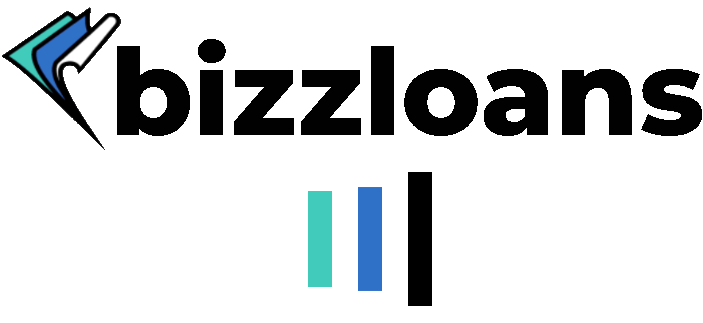Cash flow management is a vital part of every business operation because this shows the business owner a great picture of the business finances. Cash flow management and statement show whether the business is generating enough money to cover for all the inflows and outflows of cash through its investments, payables, collectibles, and other aspects that would need to be covered by the business operations for a certain period.
With all the current and possible setbacks that a business owner may encounter when you are operating a business, what does it entail to ensure that you will have enough cash on hand and cash reserves to comply with all the needs of the business operations and to protect the business from going into debts later as a result of poor debt management within the business?
1. Anticipate the business’s future needs to avoid surprises
At the onset of bringing into life the concept of having and running your own business, it is essential for the business owner to have a viable business plan. This business plan is more like the business’s playbook or operations manual to guide its employees and management team in the operations of the business., The business plan does not only include how to go about the operations but more importantly, the business plan contains a forecast on its possible periodical cash flow and income statements in the next weeks or months to come.
A business owner needs to plan for its business needs because it prepares the whole team on all aspects and possibilities that may arise in the middle of its operations. Proper and well-thought of contingency plans should also be in place for scenarios and situations that may inadvertently arise from certain situations. A good example that could be illustrated at this time would be the current pandemic that everyone is experiencing. The plan may not have been done ahead of time because no one anticipates a pandemic. But knowing about the current conditions in place, a feasible business plan may be drawn from the circumstances being faced at the moment especially if it involves cash flow management or even debt management.
Drawing up contingency plans and financial forecasts, which highly-involves the cash flow, would make the business owner more aware of all the possibilities that a certain business event might bring the business into. It is very important that business owners are not caught by surprise when they see unfavorable numbers come up because they already know what to do and they are well-aware of the measures needed to be done in order to make sure that debts will not pile up and financial obligations will be met.
2. Accounting and/or financial books should always be kept up to date
It is essential that the accounting books of the business are up-to-date primarily for the business owner to know the financial status of the business at any given period or point in time. The business accountant plays a vital role in ensuring that all records are accessible and updated. This will help the business owner see where to cut down on costs or maybe sell part of the business’s assets, if and when necessary, or to simply know where and what to adjust in the business operations so as to generate more cash for better cash flow management and make the business more liquid debt management obligations. Also, it is essential that you will be able to assign someone to closely monitor your business’s cash flow so that any form of interruption may be averted and that cash inflows are correctly accounted for. This person should also work closely with the finance team, especially if there are receivables and payables teams, for proper coordination and monitoring of cash flow management and possible debt management as well.

3. Know how much you need in order to break even
Given that the above business plans and accounting records are already in your hands, it is essential for the business owner to know how much is really needed to break even and the time it will take for the business to be able to do so. One good thing about having a solid cash flow statement, and other financials at that, is that you will be able to properly and somehow accurately forecast that numerical value and be able to plan ahead of time all the expenses and even future investments or infusion of additional capital to the business in due time. Of course, the primary aim of a business is not just to break even but to earn more than that. A very good cash flow management plan is definitely needed so you can plan ahead and reach the targets and goals of the business.
4. Cutting or delaying expenses
Most expenses of the business are anticipated and scheduled. The accountant and the finance team should be very much aware of how much money or funding is needed before, during, and after these payment periods in order to keep debts and other financial obligations at a minimum and also to keep the business operations flawless as possible. In the event of an overflow of expenses causing some interruptions in cash flow management, it is necessary for the finance team and accountant to look into the varied expenses that the business currently has. There may be expenses that can be dispensed of to make way and fund the more important ones. Some examples could be: If the business could pay off an installment purchase in one go with reduced interest rates, then maybe it would be better to pay off the remaining amount to unburden the cash flow in the next couple of months. There could be subscriptions, like periodicals, newspapers, or magazines, that are not needed by the business at this time. These could be removed from the expenses list to allocate the funding to more important matters. If all expenses are necessary and cannot be dispensed of, there could be a way to make arrangements with the vendor or supplier for a new due date that will be in line with the inflow of cash to the business and would be more favorable to the business’s cash flow management in the long run. It is best that matters like the above be discussed in depth with the business owner so as to maintain the business’s liquidity and keep off from ballooning financial obligations.
5. Turn your assets into cash
There may be assets that can be turned into ready cash, such as idle equipment or machinery. Fixed assets such as an unused building or complex may be turned into ready cash be leasing it out to potential businesses who might need the office or space. Liquidating cash that is tied up into your assets will help tie loose ends in cash flow management issues of the business and ensure that outstanding debts are paid. Turning idle assets into cash is also helpful in debt management especially if the need is immediate and when loans are not available and not recommended to be availed of.
6. Optimize the use of your accounts receivables

A business’s accounts receivables are also a good way of generating cash for cash flow management concerns. First, you need to ensure that your business has a very good way of handling accounts receivables. There are small businesses who hire a separate team just to handle receivables and payables alone, mainly because they should be constantly monitoring these accounts and ensure that they are all paid in a timely manner. Your accounts receivables team, or even just your business accountant, should be able to set invoice timelines and terms that could maximize cash inflow into the business. It is also right to say that invoicing should always be done right. Even the littlest mistake, such as a transposed number or mistakes in dating the invoice, is material in the timely and correct collection of an invoice. Second, ensure that there is a timely delivery of all your invoices to your customers in order to avoid delays in payment. Timely collection of outstanding debts from customers is very vital in ensuring that your accounts receivables will be immediately converted to cash in your balance sheet, thereby, decreasing the chances of the business having cash flow issues. Draw up easy payment terms for your customers to encourage early payments which would be beneficial in helping to reflect a good cash inflow into your cash flow management plan and statement. And last but not the least, you may want to draw up discount programs and other payment options for your customers to encourage them to pay on time. Discounted and incentivized sales to your customers are proven to be effective in making sure that they pay their invoices on time because the discounts mean lesser cash outflows from their end. On the other hand, businesses should also ensure that there will also be corresponding penalties to those who will pay late or default. This is to help the business in recovering from the bad debt or losses brought about by the transaction. This way, management could still find a way to correct any cash flow interruptions this late payment or default may bring to the business.
7. Ask for deposits from customers
In line with optimizing your accounts receivables, another best practice would be to ask for deposits from your customers most especially for bulk purchases. As for most bulk purchases, asking for a deposit, or sometimes called a “milestone payment,” is at the very least, an assurance that the customer will be paying for the rest of the order or purchase of goods from the business. This should be tied together with the receivables terms of payments set by the business to their customers. The main goal is to be able to use that deposit or cash inflow for the other needs of the business. When your cash inflows are more than your cash outflows, this gives a good picture of how your cash flow management is doing as it reflects as a positive cash flow statement at the end of a certain period.
If, for example, the customer is unable to pay for their invoice in full, this deposit can be used to cover for the bad debts that will be incurred due to the non-payment or default by the customer. There is still cash inflow involved, though not in full, and debt management would still be under control.
8. Shrinking your cash outflows
Shrinking cash outflows are viable for cash flow management and debt management in the sense that you will be able to draw up plans and programs about acquisition of assets and payment of liabilities without impacting your cash flow statement that much. There are a number of ways by which you can do this. With regard to purchase of equipment, the business owner may want to consider buying a second-hand one instead of something that is brand new. There are feasible and still usable equipment that will not gravely affect your cash reserve and yet be able to deliver the service you need from such equipment.
Whatever current equipment or machinery you have that needs repair, does not need to be replaced right away. Repairs are less costly, and the cash outflow would not be as much if you would buy a new one. Upgrades to your equipment or machinery should also be carefully considered because this would entail a big cash outflow on the side of the business. No business owner would like to be deep in debt just because of an upgrade to a machine that is still delivering what its supposed to be delivering. However, if it is already absolutely necessary to upgrade your current capital equipment, there should still be careful planning about this huge expense and make sure that the business’s cash flow would not suffer in the long run. Cash flow management is also about ensuring that there is a good balance between the business needs and your external customers’ needs.
9. Increasing margins and sales and clearing out your inventory

Costing and managing inventory entail a lot of hard work and computations that is why these are specialized fields in your business’s finance team. As a business owner, you should be aware of the impact of setting a good margin for your sales in order to gain a reasonable profit from them. Increases in profit margins do not necessarily need to be too steep that you will end up having more in your inventory than having it sold and converted to cash. Profit margins are computed based on your cost of goods and inclusion of other business operations expenses such as labor, equipment, and other similar factors, and these are usually incorporated, too, in detailed cash flow management plans. The margins should be reasonable enough that you will be able to clear your inventory and restock and keep the cash inflow going. Along with this, you can drive your team to increase sales through promotions and giving incentives, not only
10. Build good connections and relationships with your vendors, suppliers, and contractors
It is important for the business to have good connections and relationships with its vendors, suppliers, and contractors for the very reason that they can give the business payment terms and lines of credit that are favorable to the business operations. The granting of favorable payment terms is essential in drawing up a cash flow management plan that would enable the finance team to forecast the business expenses and possibly be able to get discounted rates for their purchases from their suppliers. This will keep the cash outflow at a minimum and balance it with the inflow of cash from receivables and other sources of income or funding. In cases where debt management is a concern, having good relations with your vendors, suppliers, and contractors will enable the business to come up with terms of payment and schedules that will work for both parties. What a business needs would always be a win-win situation between the business and its vendors so that goodwill is maintained, and good business dealings will continue, thereby, contributing to a reasonable and positive cash flow for both parties.

At the end of the day, it is important for a business owner to be able to strike a balance between keeping a positive cash flow statement at the end of a given period and making sure that it will also be able to keep away from the hassles of bad debts and debt management. It may be hard to strike a balance between those two facets of business. If you have the right people and the right mindset, workable and viable cash flow management and debt management plans will not be hard to meet. The ultimate goal is for the business to be profitable with the aid of a feasible cash flow management plan to follow and to minimize or eliminate the need for a debt management plan in the long run.
NEED FUNDING FOR YOUR BUSINESS? GET A FREE QUOTE TODAY AND GET FUNDED!
CLICK HERE TO GET A FREE QUOTE
Share this article


